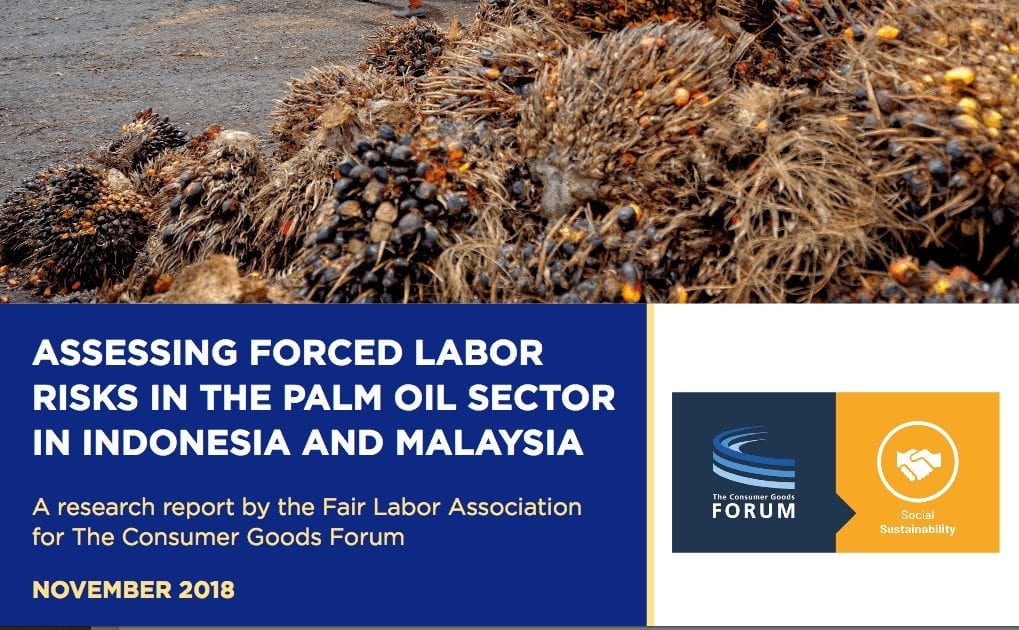
Forced Labor Risks in the Palm Oil Sector in Indonesia and Malaysia
Environmental concerns related to palm oil production emerged in the early 2000s, but it is only recently that conversations about the palm oil sector have included social, labor, and human rights issues. As awareness grows about poor working conditions and forced labor in the palm oil sector, governments around the globe, particularly in Europe, have taken notice and are exploring bans on the use of palm oil.
The increased attention to forced labor and working conditions in palm oil supply chain presents an important opportunity to increase transparency and disclosure. The Consumer Goods Forum (CGF) has selected palm oil production as a focus area for implementation of its three Priority Industry Principles on forced labor and commissioned the Fair Labor Association (FLA) to conduct desk-based research to assess the forced labor situation in the palm oil sector in Indonesia and Malaysia, two countries, which combined, account for the majority of the palm oil used worldwide.
This report presents the aggregate research findings, including analysis and recommendations, and expands understanding of forced labor issues in the palm oil sector. Furthermore, the report will inform CGF and its work. The literature review, stakeholder surveys and supply chain actors’ interviews conducted for this research project have identified indicators of forced labor, revealed likely causes, and shed light on systemic gaps and challenges.
Research found that Indonesia and Malaysia each show several indicators of forced labor as elaborated under the ILO Conventions C029 and C105. Indicators of forced labor such as coercive practices including threats, violence and lack of clarity of employment terms and conditions, dependency on the employer (vulnerability), lack of protection by state/police, debt bondage, high recruitment fees, and involuntary overtime at the palm oil estates and in the supply chain were widely cited in both countries. The highest risk of forced labor was determined amongst harvest and maintenance workers, notably those who apply pesticides and fertilizers.
FLA’s analysis suggests that there are differences in the nature and root causes of forced labor in Indonesia and Malaysia, which the report considers in depth. In Indonesia, most workers come from other parts of the country to the palm oil producing regions of Kalimantan and Sumatra, regions with the most palm oil production. Here, forced labor can be linked to unrealistic production targets pushing families (including children) to work alongside hired workers; it can also be linked to low wages, remote locations of plantations, limited mobility of workers; and lack of contractual agreements. In Indonesia, casual workers – workers who work on a daily basis, or on a certain activity for limited time period, without having regular or systemic hours of work or an expectation of continuing work and work contracts – are most vulnerable among the workforce. Stakeholder interviews indicate that female workers are primarily employed for casual work.
Read the full report here.
